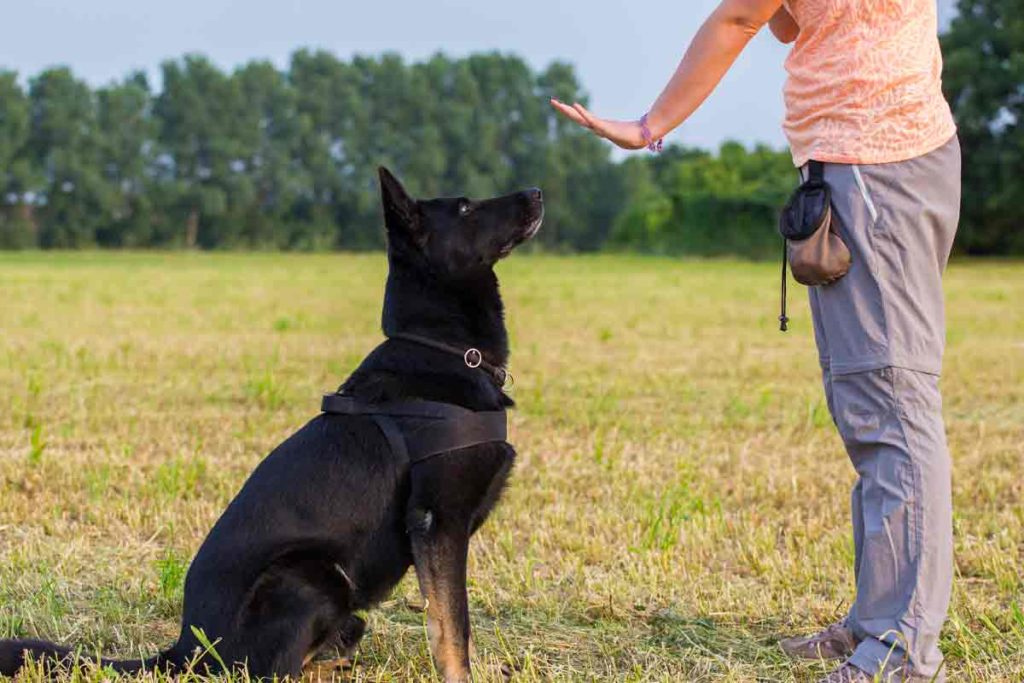Have you ever experienced the feeling of being totally blown off by your dog? You’ve given a command and gotten zero response, so you give it again… and again (Note: this can happen with kids, too). While it might feel like your dog is ignoring the clear command you have issued, improper training may have rendered that particular word ineffective–to the point where it doesn’t prompt any immediate response. The American Kennel Club (AKC) has labeled this particular human-dog interaction “cue nagging,” where “a verbal cue can lose meaning due to overuse and underperformance.”
Thanks to thousands of years of co-evolution and domestication, the average dog can learn up to 165 words and signals. Because of our close emotional bonds, it’s easy to forget that dogs do not share our language nor communicate in the same way we do. A puppy learns its vocabulary from the ground up, informed by your cues and commands and the subsequent experiences and rewards that are associated with that word. The way in which a trainer teaches and applies each command sets the tone for the dog’s response.
Command or cue nagging: What is it?
When a command fails to get an immediate response, frustrated dog owners can feel compelled to repeat themselves. You give an order; they fail to respond; so you repeat it, over and over, even raising your voice. This is cue nagging. Before long, your dog has learned to respond to a word only on the sixth repetition or when you reach a certain decibel. A single command, like “come” soon becomes a string of commands: “come, come, come, COME!” You’ve unintentionally taught your dog only to respond to an escalation, rather than a simple one-word cue. Both “come” and “sit” are training words that are commonly overused to the point of becoming redundant.
Causes of cue nagging confusion:
- Overuse of a particular word. The constant repetition of a word after failing to get an immediate response can erode the word’s impact.
- Inconsistently applied commands. A command is taught but not consistently reinforced by you or other family members. Dog training is not a one-and-done process.
- The objective of the command is unclear. Confusing and contradictory directions can result in your dog simply failing to understand what you’re asking of them.
- High distraction levels. Attempting to establish a command while the dog is in a highly stimulated state can result in words falling on deaf ears.
Fixing cue nagging
If you suspect a particular command has become poisoned by “overuse and underperformance,” in the words of AKC, it’s time to change tack. You can go back to square one and attempt to retrain your pup using the same cue through a program of dedicated reinforcement. Take your dog to a distraction-free zone and attempt to clearly give the command only once. Your directions and expectations should be clear and rewards should only be given once the command has been performed. Consult with a dog training professional to ensure the best possible outcome.
Alternatively, you can retrain the command with a new cue. For example, if you find that directions to “come” do not prompt a response, try retraining from the beginning with the word “here.” Ensure you avoid the same pitfalls of nagging repetition and increasing the command volume. Deliver your cue once and reward only when your dog comes to you, reinforcing the behavior through repeated practice until it is instilled. Your dog will need to learn the command over and over in a variety of environments for the command to really sink in as a generalized term. For example, the “come” cue applies to every situation, even in high-distraction zones like the park. This is known as proofing.
Avoiding cue nagging
The best course of action is to avoid repeating commands into obsoletion altogether! Next time you get a new dog, or even just want to teach your dog a new trick, set yourself clear guidelines and rules for how you will employ a command. If your dog fails to respond, turn your back and withhold attention until they can give you their full focus once more; then try the command again.
When you’re first establishing the cue, treat like a vending machine: allow your dog a treat every time they successfully obey the command. Once the cue is understood and you’re continuing to reinforce it in daily life, treat like a slot machine: at random intervals without consistency. Intermittent rewards will keep your dog engaged with the command until it becomes second nature.








